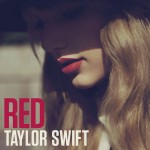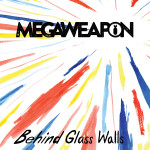There’s “fun” and then there’s being “fundamentally cool”

Super subjective topic? Maybe, but, still incredibly pertinent to a lot of people.
“Misfit”, Online Image, The Gritty Christian-True Grit, 9 October 2014
< http://www.thegrittychristian.com/?cat=11 >
It’s hard enough going through life trying to attain some definition of “majority acceptance” (especially in adolescence), to say nothing of the difficulty when one is then pursuing and enjoying additional activities that may or may not come with a separate set of social prejudices.
Is there even a difference though? Two “types” of coolness (or lack thereof)? Admittedly, it does sound somewhat like a self-generated mentality full of malarkey, derived from a single experience rather than something with which a massive amount of people might connect. However, consider these musings before the idea of “opposing forces of cool” gets filed away under nonsensical rambling:
First question: What does it mean to be a cool artist?
On the one hand, for those striving to “make it” in the business, making it can mean financial security solely through the pursuit of creating and performing music. This objective is often achieved through the formation of a relationship with a financially stable label, otherwise often referred to as the mainstream route. This route is not traversed to a successful end by most and thus is a large part of the reason for a boom in artists contrasting with DIY pursuits and such matching services.
Recent times have seen the DIY approach to penetrating the music market as one that is now accepted, commonplace and at times, even extremely fruitful in terms of social visibility and financial sustainability, comparable or even greater than that of the bands that go the mainstream way. The sudden rise of a DIY artist can be surprising because of initially lower public awareness but the abrupt turn around is not uncommon anymore.
Recent times have seen the DIY approach to penetrating the music market as one that is now accepted, commonplace and at times, even extremely fruitful in terms of social visibility and financial sustainability, comparable or even greater than that of the bands that go the mainstream way. The sudden rise of a DIY artist can be surprising because of initially lower public awareness but the abrupt turn around is not uncommon anymore.
In this way, it can be perceived that musicians and artists existing on the fringe and out of the musical equivalent of the “popular crowd,” is considered cool.
Okay, so, with music, you can do the uncommon thing, be different and still be cool (accepted). Check. Bonus cool points awarded if your music is also non-generic and makes an attempt at genuine sincerity and personal creativity.
Second question: Where does the creativity for that genuinely cool music come from?
(Note: This is just one of many proposed sources, pertinent to the larger topic on hand, as the origin of creativity is a widely discussed query, not new to either science or art.)
(Note: This is just one of many proposed sources, pertinent to the larger topic on hand, as the origin of creativity is a widely discussed query, not new to either science or art.)
This morning, while waiting for coffee to finish brewing, one of my local radio stations cued up Indie pop band, Echosmith and their currently radio-trending single, “Cool Kids.” This song having the subject matter that it does, felt like a second poke in the arm for some talk on the topic of coolness, (to be elaborated on below), following a plain, but nonetheless well written, scene between characters Scarlett O’Connor and Maddie Conrad, (Clare Bowen and Lennon Stella respectively), from the ABC show, Nashville.
The scene, which can be appreciated easily without any prior knowledge of the show, contains a smartly crafted bit of dialogue that reads as follows:
Characters:
Maddie Conrad, age: 15,
Scarlett O’Connor, age: 24
Relation:
Cousins, also both singer-songwriters.
Scene: Riding in a car, leaving a barn party where alcohol and other teenagers had been present.
Scarlett: “Look, I’m not out to get you in trouble or anything. I don’t want to stop you from having a good time–“
Maddie: “I wasn’t.”
Scarlett: “Me either.”
Scarlett: “I don’t fit in.”
Maddie: That’s how I felt too. That’s how I always feel.”
Scarlett: “You know, that’s a big part of what makes you an artist. It’s a blessing but, it’s also a curse – ‘cause that is what we do: We feel, very deeply, all of the time. But, instead of sneaking out, or acting up, the best way for people like us to deal with all them feelings, is to write them down.”
* * *
A third angle to this question of where the creativity comes from, if you will, is another school of thought that is commonplace enough to warrant the writing of entire books: artists’ perpetual inner turbulence.
Joni Mitchell, a prominent singer-songwriter of the late 20th century and staple figure of the folk and jazz genres, recently released a book titled, “Joni Mitchell: In Her Own Words,” that compiles recollections from various casual exchanges and interviews with singer-turned-journalist and reporter, Malka Marom.
As is highlighted in part of this Brain Pickings feature, a quote from the book, by Mitchell, sees her acknowledge the role of inner struggle and its resulting, ongoing sense of nonconformity, with regard to creativity and her being a musician:
“An artist needs a certain amount of turmoil and confusion, and I’ve created out of that. It’s been part of the creative force…”
These two examples, one written to emulate real life emotions felt by artists, and one existent in actual life, both incorporate the idea that artists have, and or develop, a lingering sense of non-belonging and or inner conflict — the very things those same individuals may be hell bent on wanting to shed when it comes to having their overall self be socially accepted and found “cool.”
This unabashedly stirs up thoughts on the juggling of “fundamentally cool” versus “artistically cool.” In the beginning of the “Cool Kids” music video below, the “be true to yourself” sentiment for the song is presented with the opening spoken line, “To me, cool is kind of being unique and being someone who you want to be and, like, how you see yourself”, only to see the desire for mass acceptance take over, with the refrain line, “I wish that I could be like the cool kids / Cause all the cool kids they seem to fit in.”
Certainly, the song gets a nod for the underlying message being given at the start but the pseudo-rebuttal just points out the distressing social juncture with all the more prominence. Sure, non-musicians also contend with the struggle of being yourself versus “being one of the crowd” but, add the perpetual factor brought on by the desire to be an artist and for those like teenage Maddie Conrad, it can feel like this conclusion is all that remains:
The cool (read: socially accepted) NON-ARTIST and the cool ARTIST have two sets of widely accepted/common criteria, that are nothing if but pulling apart from one another.
Does this ring true for you? “Cool” might be only one word but how it’s explained depends on who you ask.
How have you navigated some of the more intense aspects of being an artist (among non-artists)?




Leave a Reply